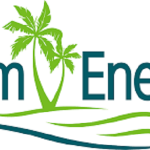Energy demand response programs are tools that complement a company’s total energy management. Taking steps to lower energy usage in peak system demand allows reducing energy expenses while earning good revenue. Factors such as periodic maintenance and repair, heat waves, and occasional storms disrupt power supply and electricity demand.
Power interruptions result from high demand with short supply. Addressing this requires building more power plants for efficient supply and demand. However, this would come at a significant cost to the environment.
Benefits for customers
Customers and utilities benefit tremendously from demand response programs. The possibility expands continuously with the modernization of the grid. Strategic deployment of demand response programs helps consumers reduce or maintain rates with better reliability service. Demand response programs offer incentives for offsetting costs regarding upgrading the build-management system and adoption of smart technology for the home.
Demand response programs are a catalyst to create energy engagement and awareness for consumers. Additionally, demand response management offers extra opportunities for educating and communicating with customers regarding the perks of participating in the program. And, it creates insights for receiving future incentives.
Earning extra income
Energy Demand Response allows business owners to lower their energy consumption wherever necessary and earning from their efforts. This is possible with the adoption of programs that monetize efforts to reduce energy from companies offering energy management solutions. The companies give business owners options that control energy consumption at their premises.
Options include energy regulation depending on supply in the region or when consumption exceeds a particular price. Business owners can control results from managing energy consumption. The amount of earnings for a business depends on the amount of electricity reduction. To keep business operations running smoothly, the energy management service will recommend how much energy to cut down with custom management strategies.
Benefits for utilities
Demand response programs benefit utility customers and utilities. Adoption of Distributed Energy Resource (DER) and Demand Response (DR) gives utilities a chance to create a more sustainable, decentralized, and clean grid. Lack of appropriate future planning of this grid, consumer adoption might outpace modernizing the grid to leave utilities facing a struggle to adapt.
A survey by the North American Electric Utilities revealed that 94 percent of DR combining with the generation of renewable energy as the priority for the coming one to three years. Additionally, about 68 percent of utilities hope DER is likely to impact their operations in the coming five years. Below are some of the DR benefits as a potential for distributed energy resources.
Check your insulation in the loft, roof and walls. You need to have at least 11.5 inches of insulation in the attic, so make sure it doesn’t get compressed when adding more. Up to 35% of heat can be lost in uninsulated walls. This number only gets higher with old windows and low radiators.
By installing solar panels on your roof, you can decrease your heating bill even further, since the panels act as another layer of insulation, the generated electricity can be used to power your heaters, and you can use the tax credits to bring down your yearly tax liability.
Intermittent resource management
Variable factors such as solar and wind create a big challenge to DER implementation. When the sun goes down or wind is not enough, handling shifts requires deploying power plants. However, these lack enough agility to manage sudden and short dips in power generation. Luckily, demand response is flexible and responsive to integrate the grid with intermittent resources.
Demand Response especially Dispatchable Demand Response allows anticipating challenges regarding balancing the grid by reducing short-term demand when the sun goffers fast-acting service when triggered electrically. There’s no need for manual intervention.
Peak shaving
During summer, the electric system faces peak demand late in the afternoon when people are back from work and turn on their electric appliances at home. Peaks in winter are usually happening early morning and late evenings when people use the water and space heater. So, the power transmission and distribution system should meet this demand. Rate-based load shifting, direct load control programs and behavioral DR allow accomplishing shaving demand at peak times with far-reaching benefits.
Relieves network congestion stress
Apart from lessening stress at the power generation level, it also reduces congestion during transmission and distribution. Dispatchable and non-dispatchable demand responses lessen transmission and distribution congestion by injecting extra energy into the strained system. Alleviating grid congestion allows power suppliers to lower market prices for customers during periods of peak demand.
Reducing system ramps
Netload is energy production through subtraction of demand from variable generation resources. Its quick increase or decrease makes it hard for grid operators to manage fluctuations in power availability and quality for customers. A non-dispatchable DR program incentivizes customers to increase demand through low energy rates as supply increase and reduces with higher rates during scarcity. So, this lessens ramp up and down sessions.
Regulating frequency
Apart from Demand Response managing load shaping, shifting, and lessening network congestion, utilities benefit from its effort in regulating frequency. Keep in mind that not all technologies are made to regulate frequency such as smart thermostats because of requirements for response time. Returning the system to the necessary frequency requires operating the programs for a short duration.
Customer engagement and increasing use of emerging technologies are key to incorporating distributed energy resources and demand response when planning. These programs engage customers while offering attractive technologies to meet goals. The perks include opening great potential and revolutionizing demand response for utilities and consumers. demand response





Recent Comments